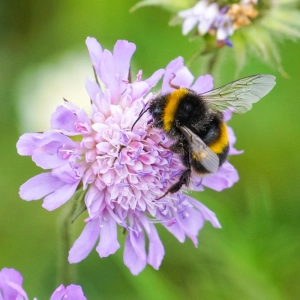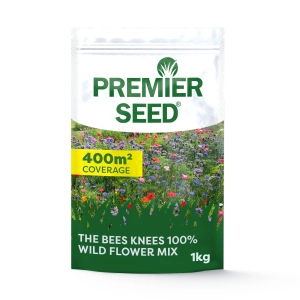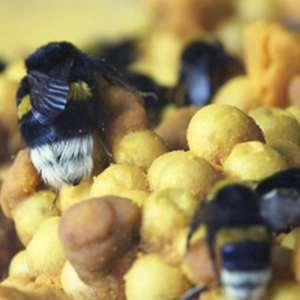Ideally, we would not have to intervene in the process of pollination – we would simply sit back and let the bees undertake this critical process or wait for the wind to blow in the right direction.
However, with a decline in pollinating insect populations, the process of pollination has become a little less reliable.
We know the important role of pollinators in supporting a healthy food chain and crop supply - there are many studies showing that pollinators like bees can help to mitigate supply issues and improve food security by holding food supplies steady.
Insect pollinators also help support the variety of crops we enjoy - contributing directly to crop yields and crop quality. So, what can we do to support the pollination process and make sure we achieve the best quality yield from our fruits and vegetables?
Well, there are three main ways to pollinate plants; by hand, by wind, or by insect pollinators - and all of these processes can be augmented by human intervention.
Hand pollinating
If you are a seasoned fruit and vegetable grower, you may already have tried hand pollinating to increase your harvest.
This process requires a gentle shake or a small brush (or cotton bud) to release some of the pollen in the male flower. Then simply transfer this pollen to the pistil of the female flower.
Male flowers will have visible yellow dust (pollen), whereas female flowers will have structures at the centre – the slender pistil made up of the ovule at the base, the style at the centre and the stigma (a small bulb shape) at the tip.
Be careful not to contaminate other plants or varieties by cleaning brushes between each pollination activity.
The process of hand pollination does depend on what type of plants you are growing, so do seek detailed advice before embarking on hand pollinating.
Parthenocarpic plants do not require any pollinating to produce fruit or vegetables. Examples of these types of plants include varieties of cucumber, grape, bananas, persimmon and pineapple.
Wind pollination
Many of our garden crops don’t require insect pollination at all, relying instead on the wind to carry pollen to the female flowers. Examples of self-pollinating crops include varieties of tomatoes, peppers and aubergine.
If there hasn’t been any wind for a while, or you are growing these in a greenhouse setting where the wind cannot reach, a gentle tapping or shaking the stems will help this process along.
Insect pollination
There are many different types of insects that can pollinate our plants. These include bees, wasps, flies, butterflies, moths and beetles. Together they pollinate around 88% of all flowering plants.
Pollinators also provide a source of food for other wildlife - birds for example rely on a healthy supply of these insects for their food needs.
Giving these pollinators a helping hand will not only help boost your crop yields, but help the natural ecosystem too, so the more we can do to help them, the better.
The most obvious way to do this is to plant flowers that encourage pollinators to our gardens, parks, fields and hedgerows. But when it comes to bees, we can help by strategically placing pollinating bee hives in these environments.
Pollinating bees
Pollinating bumblebees are ideal for vined crops like tomatoes, courgettes, peppers, and aubergine, as well as strawberries, melons and a vast range of other crops, fruiting trees and vegetables.
Placing a beehive near your crops will help improve biodiversity, boost the quality of your edible produce, and increase yield. The bees will work in a broad range of temperatures, from 4°C to 30°C, though their ideal flight temperature is between 10°C and 30°C.
Pollinating bee hives are equipped with enough food to support the performance of the bees for their natural lifecycle under normal conditions.
As the hive goes through its life cycle, the queen will produce different worker bees, soldiers, and finally other queens. As the colony declines, the queen will leave to try and establish a new hive elsewhere.
Bees will work hard to help pollinate any plants in proximity to the hive, flying up to 20mph on their way out from the hive, with a top speed of around 12mph when laden with pollen.
You can find lots more information about pollinating bees on our product pages, including tips for placement. For everything else, please contact our technical team on 01522 246491.






